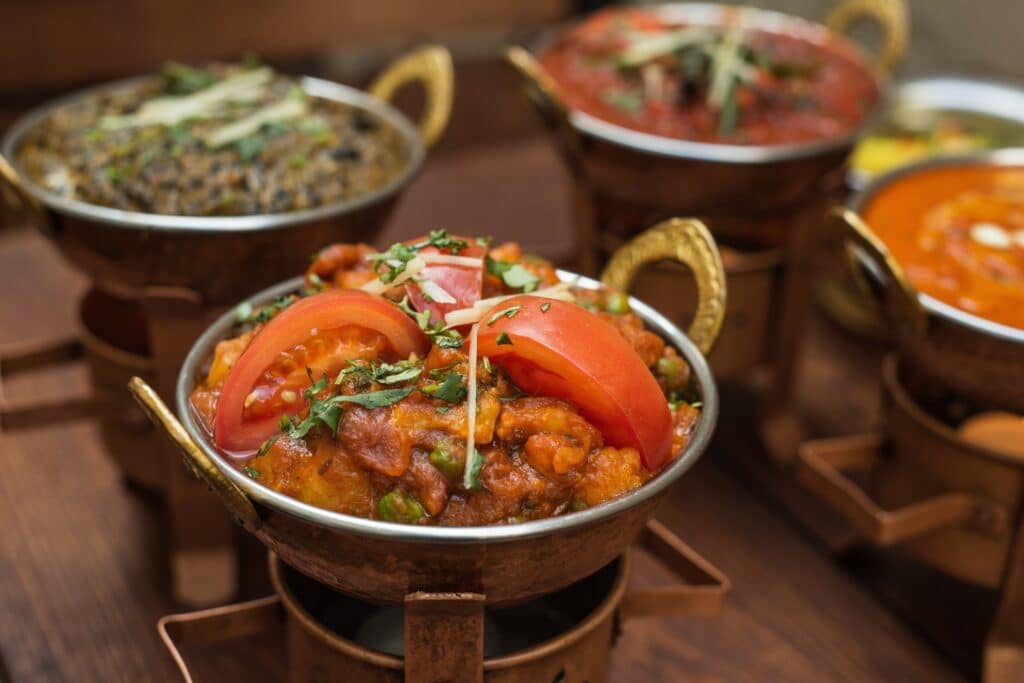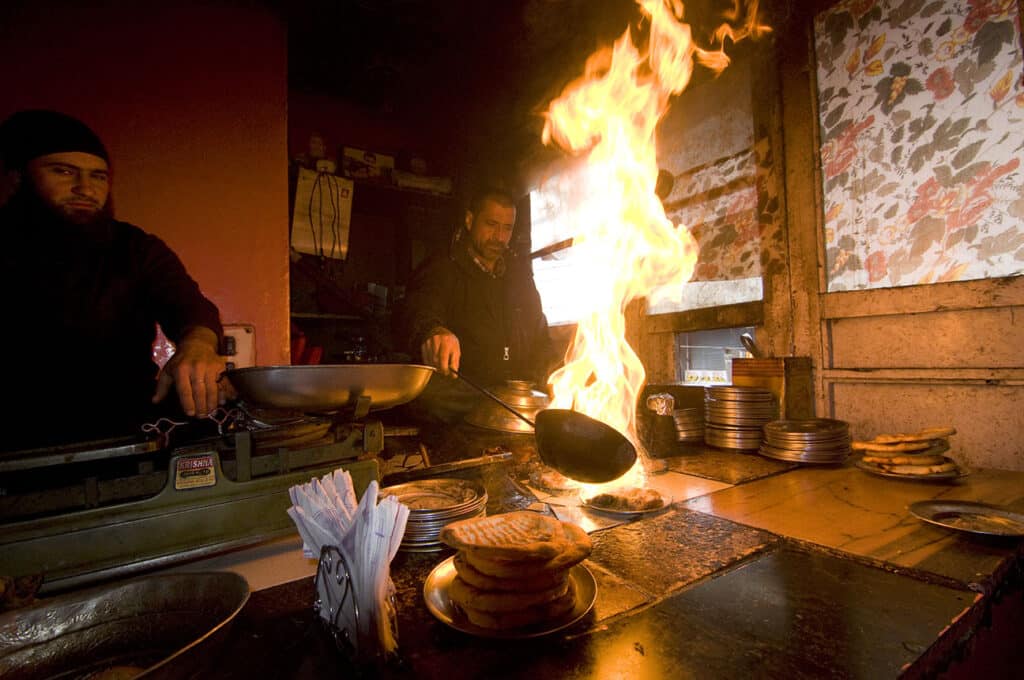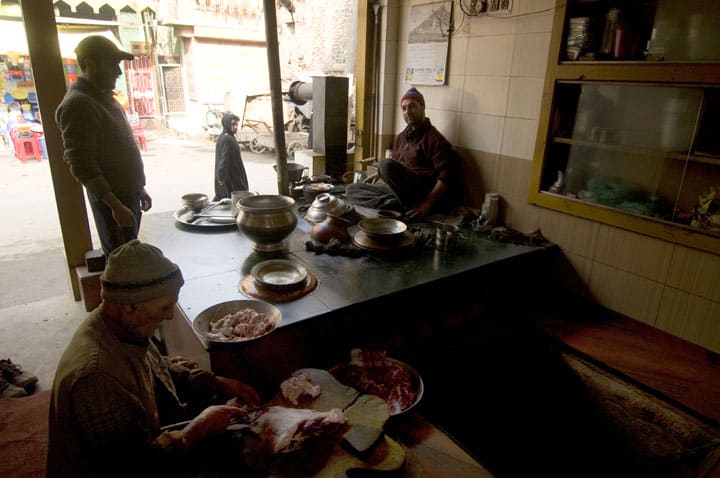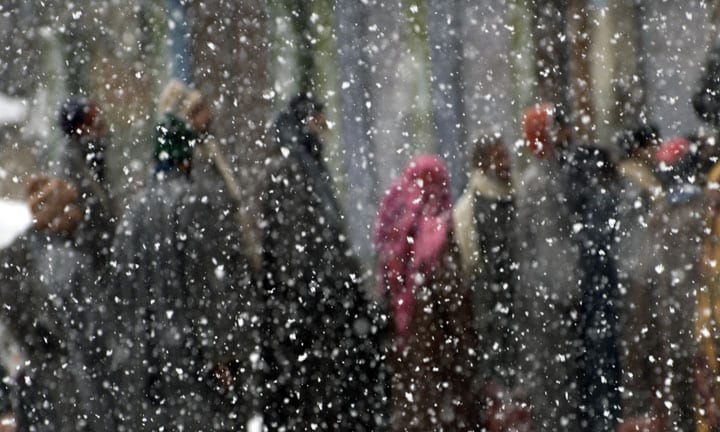The Food that Keeps Kashmir Warm

Listen below. Click “globe” for more languages.
Mehman nawazi (hospitality) is etched in the ethos of Kashmir and her people, a centuries-old legacy of this Northwestern Indian state. Every time I land myself in Srinagar, my friend Mushtaq would pick me up late in the evening, and a half-an-hour bumpy ride through the Srinagar-Ganderbal highway would take us to his humble two-storeyed house in Kashmir. A four-course dinner of goshtaba, yakhni, rogan josh and rishta follows. Not necessarily in that order, but always hearty portions of meat, rustled up in authentic Kashmiri style.
On a cold January night in Kashmir, in the middle of another elaborate dinner, I first heard of harissa. From the animated discussion I gathered that the meat preparation is especially available only during the six weeks of chillai kalan (the harshest winter period from December 20 to January end), the chillai khurd (the 20-day-long period that follows) and the subsequent 10-day phase of chillai bacha that marks the end of the cold season. “It has kept Kashmiris warm for centuries.” – Mushtaq told me. He added that for the average Kashmiri, whose everyday breakfast normally means a fresh handmade bread and a cup of namkeen chai, a plate of harissa is still an affordable winter luxury. A plate of 100 gm. of harissa that comes with a couple of complimentary Kashmiri naans called choche costs Rs. 140-180. “Considering the ever-increasing price of meat and spices, and the time and patience required to make harissa, this is very reasonably priced.” – Mushtaq said.

Two days later, I found myself in Mushtaq’s car at the ungodly hour of 5 a.m., the mercury hovering just above freezing point. It was a grey morning, the narrow streets of Srinagar’s old city wet from incessant snowfall. Mushtaq drive through the kadals (bridges) that criss-cross over River Jhelum flowing through the old part of Srinagar and I heard the chants from nearby mosques echoing off the walls of ancient houses flanking the deserted streets.
A shop, ensconced unobtrusively amid a long line of closed shutters, was open. A tiny outlet and I would have surely missed it, if a group of men, huddled in long Kashmiri coats, had not stood outside its rust-coloured wooden entrance. As Mushtaq heaved his car to a halt opposite the shop, a delicious smell wafted through the chill. The shop was without a signage and in its dimly-lit interiors, a portly figure was bent over a huge earthen pot. I crossed the street and joined the motley band of people waiting outside. A soft drizzle had just begun, and snowflakes started settling noiselessly on my overcoat. The man inside carefully inspected the simmering contents of the pot, stirred it with a long wooden spoon and with a wave of finality that would befit an orchestra conductor, added some more spices into the cavernous pot. He then beamed towards the silent crowd, satisfaction writ large on his middle-aged, good-natured face: “Your harissa is ready.”
Mushtaq told me he is Zahoor Ahmed, the owner of this harissa outlet, and he opens his shop daily at 4 in the morning from November to mid-March.

Zahoor Ahmed is the fourth-generation owner of the eatery, one of the few outlets in old Srinagar that still serves the traditional delicacy. Ahmed explained how it is prepared. Locally grown top quality rice is skimmed down to a squidgy pulp and mixed with deboned, meticulously-minced lamb shanks and fragrant seasonings like fennel seeds, cinnamon and cardamom. The gooey concoction is then cooked overnight in huge earthenware vessels on a slow fire for eight to ten hours.
Ahmed, whose forefathers came to Kashmir from the Persian peninsula, told me that Al Harees – a slight variant of the same dish – has been around in the Middle East since pre-Islamic time. Instead of the rice, they cook the meat with wheat and use a few different spices. The Mughals brought the delicacy to Kashmir when they first came here in the 16th century.
More people arrived and the shop’s two assistants got busy filling their carriers and nickel-coated copper plates with dollops of the rich paste. “I seldom get up before during Chillai-Kalaan, except when I come here for the harissa. Today I woke at 5.30.” says 32 year old Altaf Mehmood, a teacher who has come all the way from a village 15 km. away from Srinagar. Majid Alam, another loyal customer, said “My family has been eating harissa from this shop for the last forty years.” Ahmed neatly packed five kgs. of harissa for the elderly Alam, who had it for his daughter’s home in Baramulla.

I found myself a small table with Mushtaq. Seated on an elevated stone platform, Zahoor reached into the contents of the steaming pot and scooped out a generous helping of harissa with a brass ladle, put it on a small plate and garnished it with a dose of flaming hot edible oil. I took a tentative jab at the semi-solid concoction with a portion of a naan bread. The mushy blend of succulent lamb shanks with fine grains of rice melted immediately in my mouth. Amazingly, the distinctive tastes of the spices – from the gingery cardamom to the faint whiff of cinnamon – tickled my taste buds leaving a slight smoky trail on them. Zahoor refilled my plate a second time and as I devoured it up in no time, he laughed jokingly “I shouldn’t allow you a third plate, though.” He had a good reason for his forbiddance. A popular story about harissa is about an Afghan governor of Kashmir in the 18th century. His overindulgence in the winter delicacy resulted in his death.
Book your stay in Kashmir
Use the interactive map below to search, compare and book hotels & rentals at the best prices that are sourced from a variety of platforms including Booking.com, Hotels.com, Expedia, Vrbo and more. You can move the map to search for accommodations in other areas and also use the filter to find restaurants, purchase tickets for tours and attractions and locate interesting points of interest!

Sugato Mukherjee is a photographer and writer based in Calcutta with bylines in The Globe and Mail, Al Jazeera, Deutsche Welle, Nat Geo Traveller, Atlas Obscura and Discovery, among others. While documenting humanitarian stories remains his priority, he equally loves to explore new destinations and write about them. Sugato’s coffee table book on Ladakh has been published from Delhi, and his work on sulphur miners of East Java has been awarded by UNESCO.